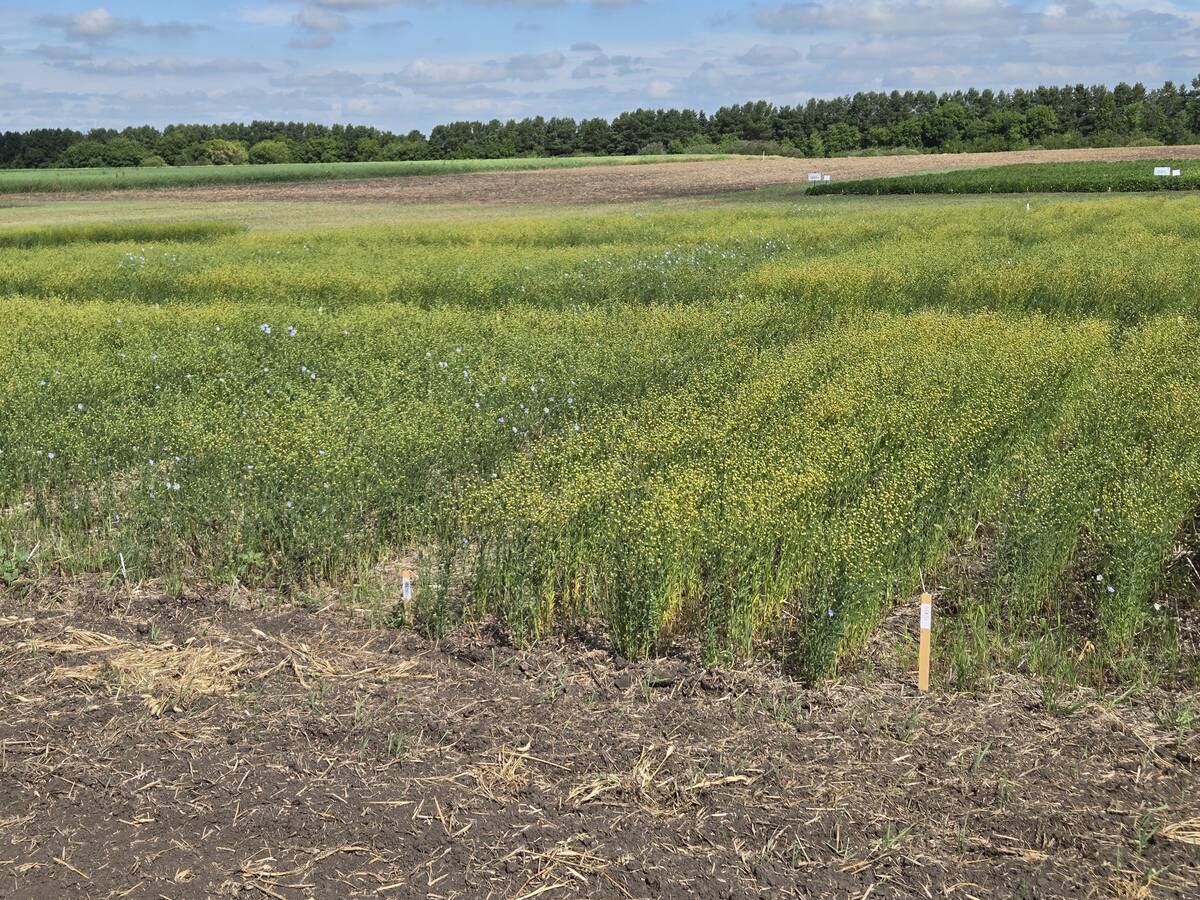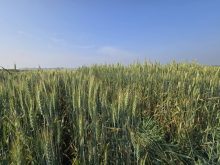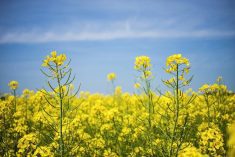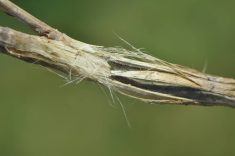Researchers at Manitoba’s crop diversification centres are completing a study on flax seed treatments, investigating whether the products can improve crop emergence and plant stands.
A project at the Manitoba Crop Diversification Centre (MCDC) in Carberry is testing two seed treatment options at different rates on yellow and brown flax varieties, focusing on helping crops establish strong stands rather than controlling specific diseases.
“I’m more concerned about the benefits of a seed treatment for getting the profit of the ground, having a little bit of strength so that can grow to have a strong plant,” said Morgan Cott, agronomy extension specialist for special crops with Manitoba Crop Alliance, at an MCDC field day on Aug. 6.
Read Also

Still hard to predict precise fertilizer payback
Despite decades of advances, international research finds no clear answer for where and when adding nutrient will fail to boost growth.
WHY IT MATTERS: Study examining if seed treatments can help flax crops emerge better and establish stronger plant stands.
The research addresses a gap identified by producers who questioned why little flax seed treatment research was being conducted in Manitoba. The study examines not just emergence and disease control, but also the “treatability” of flax seed itself, Cott said.
Farmers don’t typically like to treat flax because they feel like it runs right off, due to the seed’s shiny, waxy coating that makes it difficult for treatments to adhere properly, Cott said.
Three key diseases under examination
The trial is testing seed treatments targeting three main seedling diseases that affect flax: fusarium, rhizoctonia and pythium. These diseases affect flax as they do most crops, making prevention through seed treatments or other management practices important, Cott said.
Fusarium, while present in Manitoba soils and affecting cereals, oilseeds and pulses, tends to be a weaker root rot in flax compared to other crops. However, it can cause fusarium wilt later in the plant’s development rather than just root rotting issues in seedlings.
“It’ll affect the plant at any age. So, when we’re scouting for it in seedlings, we’re going to be pulling up those flax plants and finding like an ashy gray root color,” Cott said, adding that in more mature plants, the tip turns yellow and the condition moves down the plant.
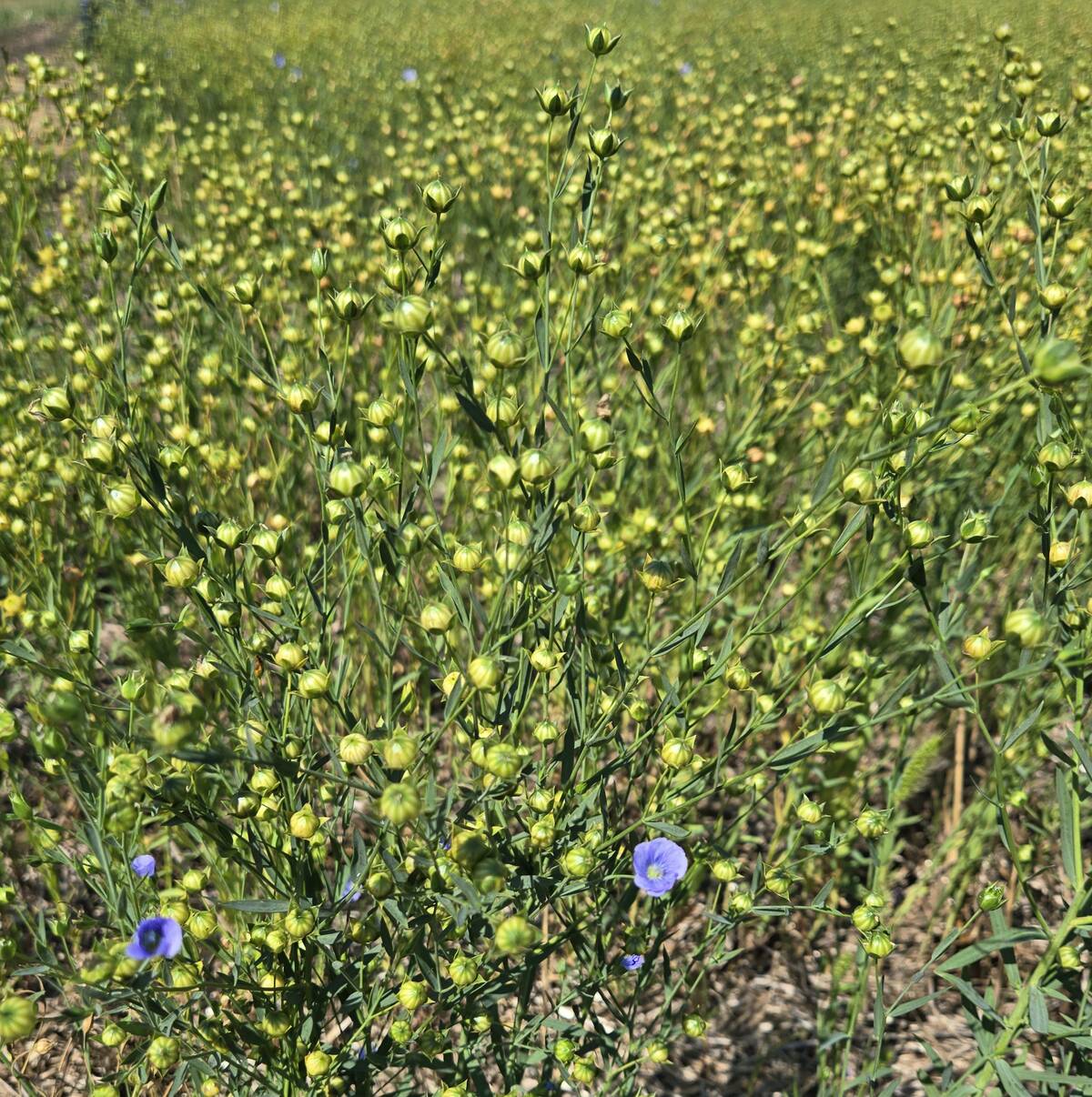
Rhizoctonia represents a bigger concern, particularly given its prevalence in pulse crops. The disease can affect plants before, during and after emergence, causing lesions at or below the soil surface that can kill smaller plants, but which larger plants may grow out of as they become stronger, Cott said.
Pythium, she added, thrives in wet conditions and saturated, cool soil conditions. Unlike some diseases, it doesn’t need a wound to infect the plant and causes browning and discoloration of roots along with stunted plant growth.
Testing multiple treatment options
The research is using either Insure Pulse or Vitaflo products at high and low application rates on two varieties: AAC Bright, a yellow-seeded variety, and CDC Rowland, a brown-seeded variety.
Cott has noticed visible differences between treated and untreated plots in her research. In one comparison, untreated AAC Bright was still flowering while treated plants in the adjacent plot had progressed further in development, suggesting the treatment may have prevented delayed emergence rather than necessarily controlling disease.

“My takeaway is not that there was necessarily disease here. There could have been, but it was probably delayed and emerging a little bit. Not that I’m trying to self seed treatment, but it did work,” Cott said.
CDC Rowland appeared to be a stronger plant compared to AAC Bright in the trials, she added.
Application challenges
Beyond disease control and emergence benefits, the research examines how well seed treatment products adhere to and flow with flax seed during planting operations. The seed’s waxy coating creates challenges for both treatment application and seed flow through planting equipment.
For producers who do choose to treat flax seed, seed treaters have developed best practices to improve results, Cott said.
“A seed treater would typically encourage a farmer to treat it and then leave it for a few days to let it really not solidify, but get firm on the seed and then flowability is better.”
The recommended practice involves treating the seed and then letting it sit for about a week before planting to improve flow characteristics and reduce bridging issues with the small seeds, Cott added.
The research is being conducted at all four diversification centres across Manitoba, providing 12 site-years of data when the study concludes this year. However, Cott doesn’t expect to see major disease control or yield boost benefits from the treatments.
“I typically don’t think you’re going to be seeing too much for disease control or yield boost. It’s more, as I say, about getting the crop out of the ground,” she said.
Flax crop update
The research comes as Manitoba’s flax crop appears to be performing well this season.
In the southwest region, no major issues were being reported and flax was at 50 per cent brown boll, according to Manitoba Agriculture’s Aug. 26 provincial crop report. Earlier in August, the province had noted that new moisture would help with seed set following the earlier heat and dry conditions.

Flax was at the brown capsule stage in central Manitoba while, in the Interlake, flax was in full boll development and fields were changing colour.
The positive crop conditions come after variable weather across the province, with isolated rainfall and storm events occurring across southern Manitoba in the second week of August. Some areas received significant precipitation, benefiting longer-season crops, including flax.


